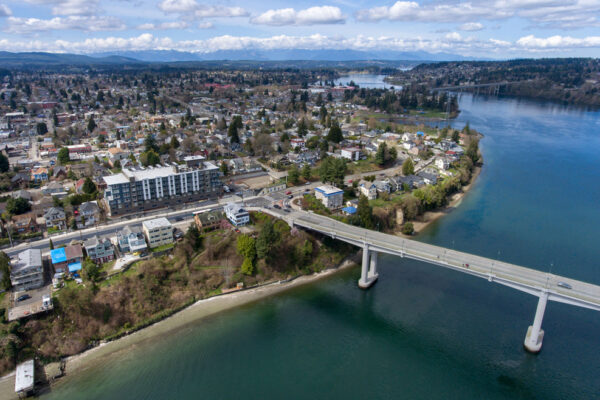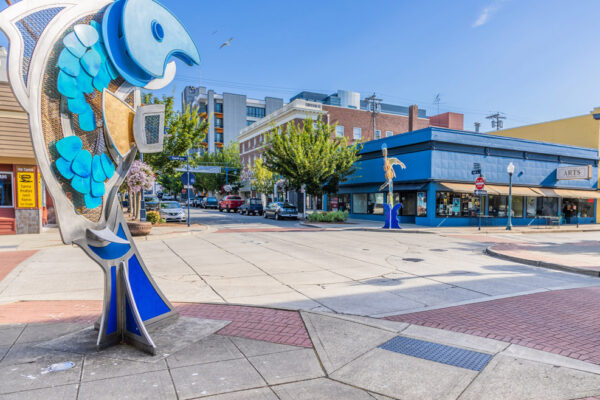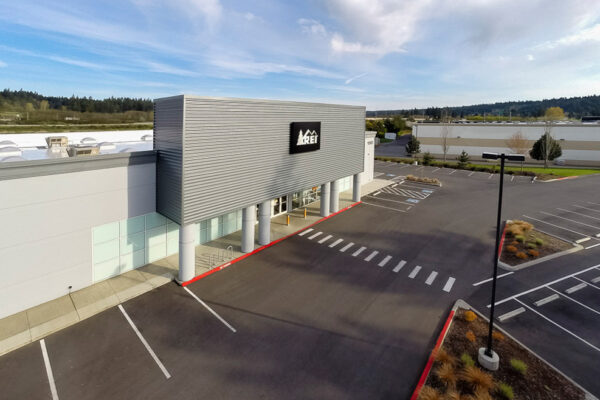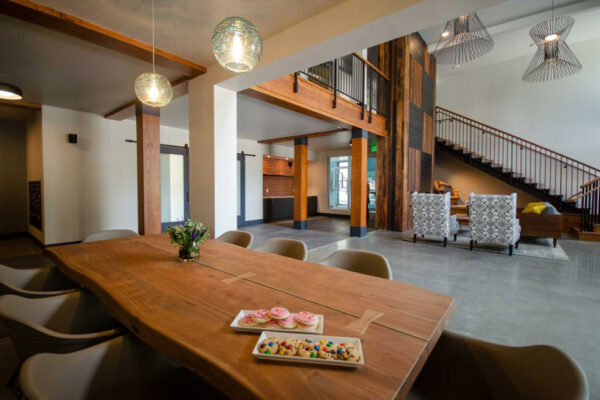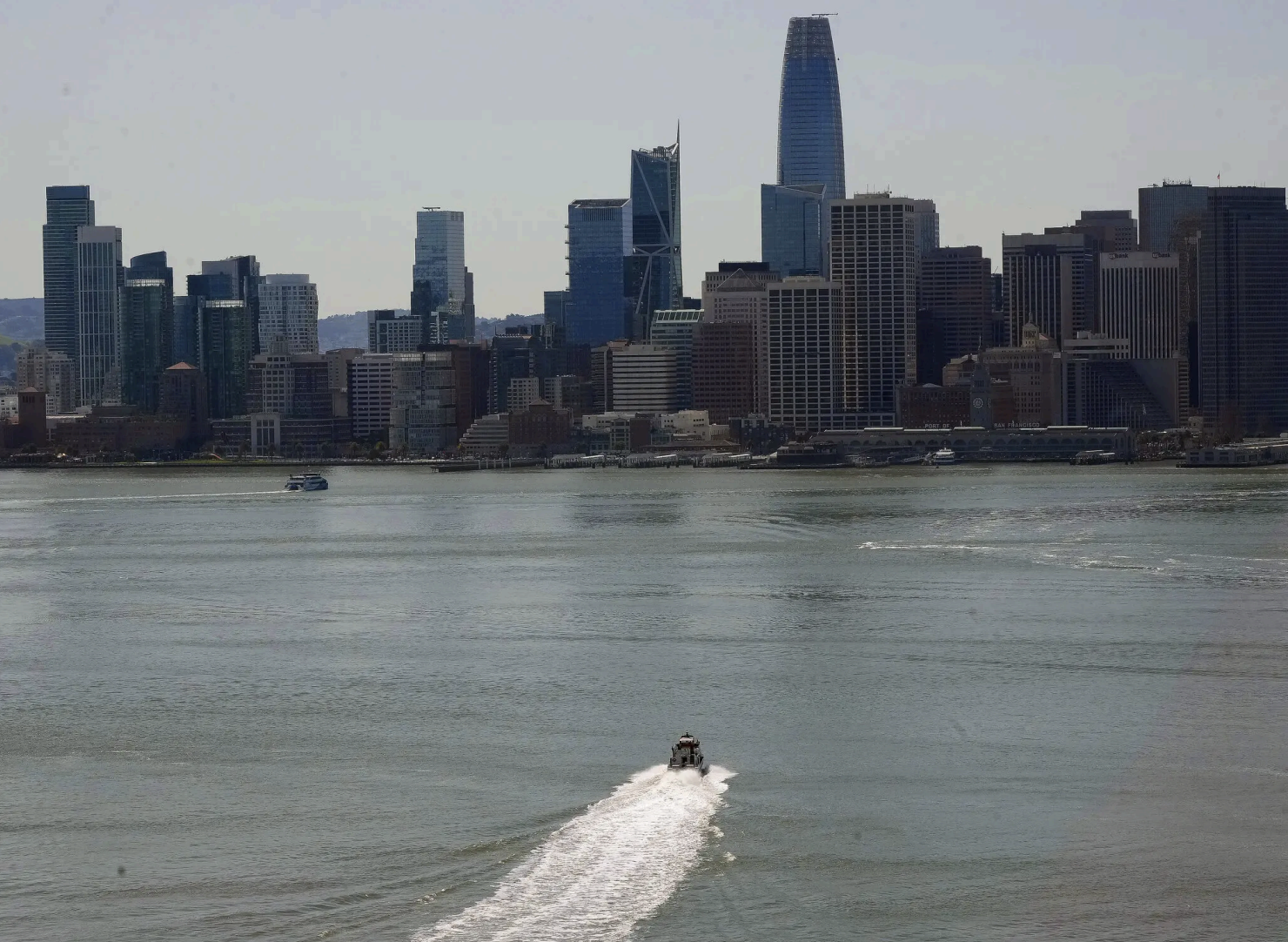Ferry ridership took a hit during the pandemic. But new terminals, additional routes and faster, smaller boats are driving a new era of water transportation and development.
By Linda Baker April 8, 2024 on the New York Times
As remote work reshapes the way people live and travel around cities, Americans are taking to the waterways not only as part of their commute but also as part of their daily lives.
Some coastal cities are seeing ferry ridership bounce back after a decline during the pandemic, and growing interest in water transit is spurring both new types of ferry services and waterfront development.
In Bremerton, Wash., a fast-growing Seattle suburb on Puget Sound, a $141 million development opened less than 100 yards from a high-speed passenger ferry that travels to downtown Seattle in 30 minutes; its older car ferry service takes an hour. Carteret, N.J., is launching a ferry service to Manhattan, adjacent to a waterfront film and television production complex. Ferry service is also central to the development of a new community on a former naval base off San Francisco.
The ferry boom comes as municipal governments are trying to address a variety of social, economic and environmental challenges, and as some of the country’s largest cities look to water transport to ease traffic, connect communities and meet housing and commercial development goals. Last year, the Federal Transit Administration announced grants totaling $220.2 million for ferry systems. And local governments are offering tax incentives to redevelop industrial zones. Ferry systems are expanding beyond traditional commuter and tourist routes to meet the “discretionary travel patterns” of remote workers and retirees, said Ryan Avery, interim director of the Washington State Transportation Center at the University of Washington. “They’re doing it for shopping, going to a football, soccer or baseball game,” he said.
“The market changed,” he continued. “People also want faster service.” He noted the changes were also opening up opportunities for new types of terminal designs — as mixed-used hubs offering other transit connections, rather than as a singleuse building surrounded by a parking lot.
In Bremerton, the ferry and the nearby Marina Square apartment complex are part of a third wave of waterfront development, said Wes Larson, founder and chief executive of the Sound West Group, which qualified for an eight-year property tax exemption on improvements for Marina Square. The area’s population has increased 6 percent since 2020, driven in part by Seattle’s high housing costs. (The average rent for a one-bedroom apartment is $1,997 in Seattle and $1,447 in Bremerton, according to Apartments.com.)
Marina Square has 270 apartments, a waterfront park, a restaurant and a market; a Y.M.C.A. is also planned. The complex includes studios and furnished, extendedstay suites for workers at Naval Base Kitsap, the region’s largest employer, four blocks away.
Over the past seven years, the transit agency in Kitsap County, which includes Bremerton, has opened three passenger-only fast ferry routes to Seattle, which can carry 120 to 350 people. The operation had more than one million riders in 2023, up 37 percent from the year before.
Last summer, the Washington State Ferries system reopened its primary ferry terminal in Seattle after a $467 million renovation. The city is developing a new waterfront that will reconnect downtown with Puget Sound.
The terminal, called Colman Dock, features public space, retail and food vendors, outdoor plazas and a site for charging electric ferries. The ferry agency is aiming for an emissions-free electric fleet by 2050.
In Carteret, Mayor Daniel J. Reiman is close to seeing his 15-year effort to launch a ferry service realized, with operations expected to start next year.
Carteret does not have a rail station, and local highways are overwhelmed by traffic, Mr. Reiman said. The ferry, he said, will provide “a much-needed alternate mode of transport to New York City, and gives the opportunity to redevelop an older urban community.”
The borough recently approved a $1 billion waterfront project that will include Carteret Stages, a 15-story movie and television production studio, hotel and retail and restaurant pavilion, to be built on a former DuPont Chemical site that has been vacant for almost 60 years. The site will also include a ferry terminal offering 20- minute service to Manhattan.
In San Francisco, a new neighborhood with retail, commercial space, parks and 8,000 apartments, condos and town homes is taking shape on Treasure Island, a former naval base that is a 10-minute ferry ride from downtown. The project is a partnership between the city and a private development group, Treasure Island Community Development.
“There is no more direct way to connect a resident on the island to the beauty of the bay than having a ferry service,” said Chris Meany, principal at Wilson Meany, the group’s lead developer. “The ferry also keeps you from ever having to be in a traffic jam.”
Treasure Island Community Development is funding the ferry operations, which started in 2022, for the first few years. The Water Emergency Transportation Authority, a public agency that operates the San Francisco Bay Ferry system, will take over.
The authority’s ferry system, which includes 15 passenger boats, has recovered around 90 percent of its prepandemic ridership, partly by cutting fares and adding more service, said Jim Wunderman, the agency’s chairman.
The agency is also working on an expansion plan to ensure reliable transportation in the aftermath of an earthquake, he said. One strategy is to team up with local communities and developers to build ferry terminals in new neighborhoods.
“We’re advocating for ferries as a missing transit link, but also to create opportunities for development on the waterfront,” said Mr. Wunderman, who is also chief executive of the Bay Area Council, an economic development group.
Treasure Island will include housing for workers and homes and services for people who have been homeless, Mr. Meany said. Buildings will be 300 feet from the water’s edge to account for storm surges.
Even seasonal ferry service is attracting development. Last year, a new ferry in Lynn, Mass., offered a 35-minute passage to Boston’s Central Wharf from June through October. A development firm purchased an adjacent property that had been vacant for 40 years and built the Breakwater North Harbor complex with 331 apartments, said Jim Cowdell, executive director of the Lynn Economic Development and Industrial Corporation, the city’s economic development agency.
“The property was sold because of the ferry,” Mr. Cowdell said. “It’s a two-minute walk: You hop on the ferry and go into Boston.”
Photo credit: Jim Wilson/The New York Times
